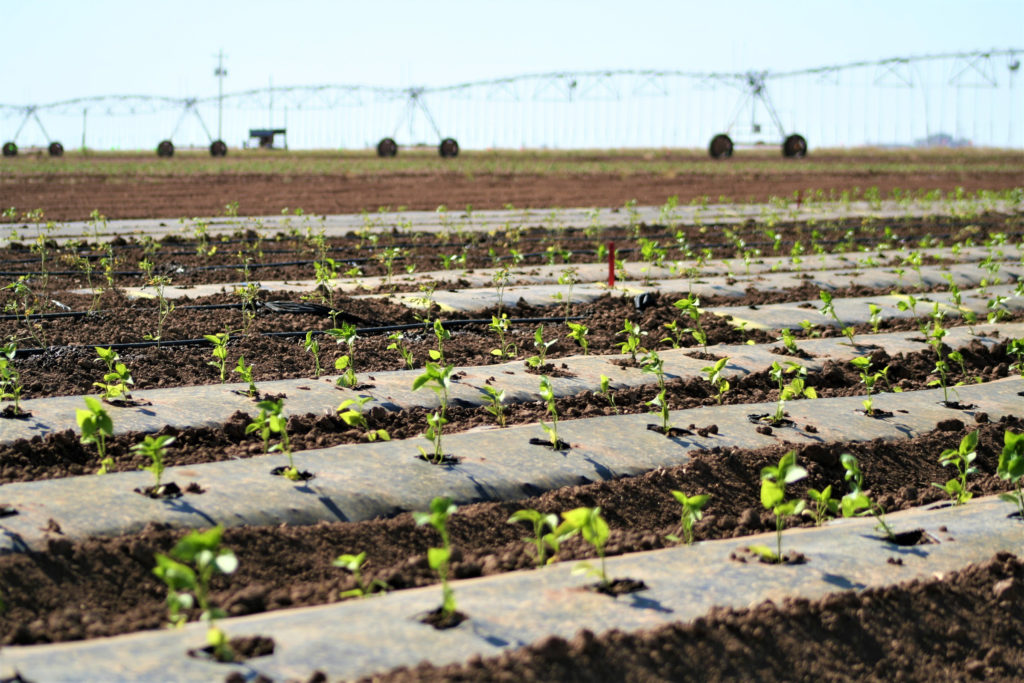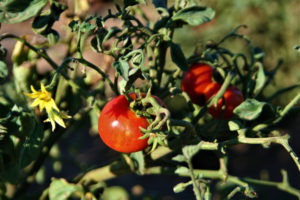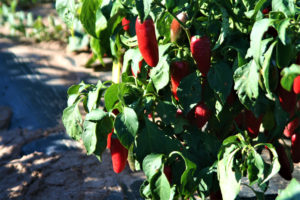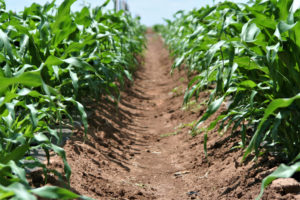Vegetable feasibility analysis developed for High Plains producers
Writer: Kay Ledbetter, 806-677-5608, [email protected]
Contact: Dr. Justin Benavidez, 806-677-5600, [email protected]
Dr. Charlie Rush, 806-354-5804, [email protected]
Dr. Bridget Guerrero, 806-651-2614, [email protected]

AMARILLO – Producers in the Texas High Plains will soon be able to run advanced budgeting scenarios before planting non-traditional crops such as vegetables on smaller acreages.

High-value crops such as vegetables can increase overall producer profitability, said Dr. Justin Benavidez, Texas A&M AgriLife Extension Service economist, Amarillo.
While vegetable production in this region dates back many years, increased demand and associated price increases for corn from the growth of the cattle feeding industry in the High Plains led to a decline in acreage over time, Benavidez said.
Now that the water in the Ogallala Aquifer is limited in some areas, producers are looking for alternative crops that can provide increased returns for the same amount of water, he said.
“Also, there is an established desire among consumers to know where their food comes from and have it locally sourced,” Benavidez said. “That is helping generate some of these higher prices for vegetables and making them an economically feasible alternative for some producers.
“However, these budget analyses on a variety of vegetables are needed, because they allow a producer to establish realistic break-even estimates, both on yields and prices,” he said. “Having those breakevens are key to establishing production goals.”

With no recent studies taking into account updated technologies utilized with these crops in the High Plains, Texas A&M AgriLife Research, AgriLife Extension and West Texas A&M University combined efforts under an Ogallala Aquifer Program grant in 2018 to identify the economic feasibility of three crops – tomatoes, jalapeño peppers and sweet corn.

The crops were produced by Dr. Charlie Rush, AgriLife Research plant pathologist, at the agency’s research farm near Bushland. Economic data was gathered by West Texas A&M graduate research assistant Mandi Boychuk under the direction of adviser Dr. Bridget Guerrero.

Boychuk analyzed return on investment for each vegetable compared to traditionally irrigated field crops, as well as determined which crop generates a higher profit per acre-inch of irrigation water and alternative marketing outlets to obtain higher vegetable revenues.
She looked at Rush’s operations using surface drip irrigation on crops grown both with and without use of black plastic mulch. Field production data gathered included water use, labor hours, input costs and yields.
Boychuk utilized several sources, including AgriLife Extension crop budgets, U.S. Department of Agriculture information and existing literature to compile the data to create enterprise budgets. The data included revenue, variable costs, fixed costs and total profit for each vegetable on a per-acre basis.
In addition, Boychuk said she surveyed area producers already growing vegetables to see where they were marketing their produce and what range of prices they were receiving. She said producers reported selling to restaurants, farmers markets or out of their home, and the outlet definitely made a difference in the prices.
The largest vegetable operation surveyed was 30 acres and the smallest was about a quarter of an acre, she said. Vegetables were grown in high tunnels, greenhouses and in open field conditions.
The alternative marketing outlets of farmer’s markets and restaurants allowed for higher total profit for tomatoes and jalapeño peppers, Boychuk said. Jalapeño peppers and sweet corn were not viable to produce unless sold at higher prices through these marketing outlets.
The prices ranged from $4 per pound with at-home sales to $6 per pound at restaurants for tomatoes and $1.50 per pound at home and $3 per pound at restaurants for jalapeno peppers. Both vegetables sold for $8 per pound at the farmers markets.
“However, to sell at a farmers market, there is a much greater time commitment required to get that price,” she said.
“These prices generated much higher returns than the $39.49 for tomatoes and $23.12 for jalapenos per hundredweight estimated for wholesale prices,” Boychuk said.
She said wholesale prices producers would receive were estimated for the crop budgets based on reported retail prices and applying the farm share, which is the average percentage of a retail dollar received by the farmer.
Due to possible yield variability, break-even prices were estimated based on alternative yields so producers know exactly how much they need to make to cover either variable costs or total costs.
Boychuk said in her analysis tomatoes had the highest return on investment when vegetables were compared to all other crops evaluated. Tomatoes also returned a higher profit per acre-inch of irrigation water.
Several factors affecting profitability of all the vegetables include being able to decrease hand-weeding labor hours with the use of black plastic and properly maintaining the drip-tape irrigation system so it doesn’t have to be replaced as often.
Other vegetables and production inputs could be analyzed in the future, Boychuk said. Surveys indicate restaurants are interested in locally sourced radishes, salad greens, okra, strawberries, spinach, pumpkins and all types of squash.
“Seed production would be another good feasibility study, because it allows the producer to have more than one source of income, with both produce and seeds to market,” she said. “Other crops that should be considered next for analysis would be strawberries, okra, squash and spinach.”
Benavidez and Rush both said they are excited to have this analysis on the economic feasibility of producing high-value vegetables so producers can make an informed decision regarding the incorporation of vegetable production into their existing operation.
“This information will benefit not only producers faced with declining water availability but also small landowners considering more productive uses of their land,” Rush said.
Rush has spent the past three years investigating vegetable growth under high tunnels, which resemble a plastic Quonset barn, and in traditional field operations. He initially had four high tunnels and grew tomatoes and peppers, but has recently added two more tunnels and will also add flower seed production to his studies.
“We believe implementing vegetable production in an existing operation is an alternative that can help increase or maintain overall producer income when a producer begins experiencing declining water availability,” he said.
Benavidez said while tomato production in the High Plains has great profit potential because it is a specialty crop and not eligible for Agricultural Risk Loss Coverage, Price Loss Coverage or Marketing Assistance Loan programs, producers should consider the risk associated with field production and methods to reduce the risk.
Rush said the purpose of his ongoing studies is to help provide valuable information concerning production practices and best-management procedures to battle pests, disease, temperatures and water availability issues.
“From an AgriLife Extension standpoint, we are always looking for crops that have a higher return or value for water, especially when some of the traditional crops are having a hard time penciling out,” Benavidez said. “Producers will be able to use this like other crop budgets to determine if vegetables fit into their operations.”
He said when these vegetable-profit analyses are finalized at the end of May, they will be published at https://amarillo.tamu.edu and put into the Crop Profitability Analyzer in the fall.


